March - July 2022
![]()
![]()
![]()
Exhibition, Creative Direction, and Organisation:
Roman Stamborski, Natalia Wyrwa, Frédéric de Pourtalès, Sarah Bovelett
With the summer semester an intensive work period started that focused on two topics: Elaboration of minimally invasive concepts for a medium- and long-term transformation of the site for sustainable development in exemplary projects, as well as strategies for conveying the designs, beyond classical presentation methods such as plans and models, in order to be able to be discussed with the inhabitants.
![]()
![]()
![]()
In addition, practical experiments were undertaken to investigate the question of the minimal possible interventions with a high impact, as well as the significance of one-to-one prototypes in architectural design practice. The highlight of this period of the overall project was the second trip to Caporciano for a week of exhibitions and workshops. The village became a reallaboratory, where the design ideas were visualized and made tangible with the use of the simplest methods at their specific locations, in order to create a future vision for the village in collaboration with the locals.
![]()
- The Common In-Between
Project by Max Bilger, Leonie Hartung, Cosima Seiberth
The Common In-Between takes a large-scale, landscape-topography perspective and considers Caporciano as a node in the network of places on the plateau, the Altopiano di Navelli. Inspired by the tratturi, the traditional paths of the shepherds, the project group looked at the infrastructures, transport routes and their structural manifestations from ancient times to the present day. Parallel to this analysis of the place, the group developed a material resembling opus caementitium, the cement free ancient roman concrete that recycles construction debris and mineral waste that can be found all over the place. This material is used to create sculptures that embody the 2000 years of history of the region in a twofold way. As waymarkers, they also point out the parallel existence of historical and contemporary infrastructures and make them tangible through new hiking routes.
![]()
![]()
![]()
![]()
![]()
![]()
![]()
![]()
![]()
![]()
![]()
![]()
![]()
- Communal Gardens
Project by Annekathrin Warter, Lena Wild, Valentin Warminski
The project Communal Gardens aims for a new approach in dealing with the historically grown structural density and the long-term transformation of the entire village. A process that is to be triggered by context-specific interventions: It proposes to open up the numerous abandoned gardens hidden behind walls and the overgrown ruins to change the urban fabric of the place. These green spaces between the narrow and stony alleys offer new opportunities for the local community to meet. This not only makes the village more attractive as a place for people to live and settle, but also creates a sustainable environment that can respond more flexibly to the challenges of climate change. Within a week, an exemplary garden was redesigned by the students and warmly inaugurated together with the residents.
![]()
![]()
![]()
![]()
![]()
︎︎︎︎
Phase 02: Exhibition, Discussions and Real Laboratory

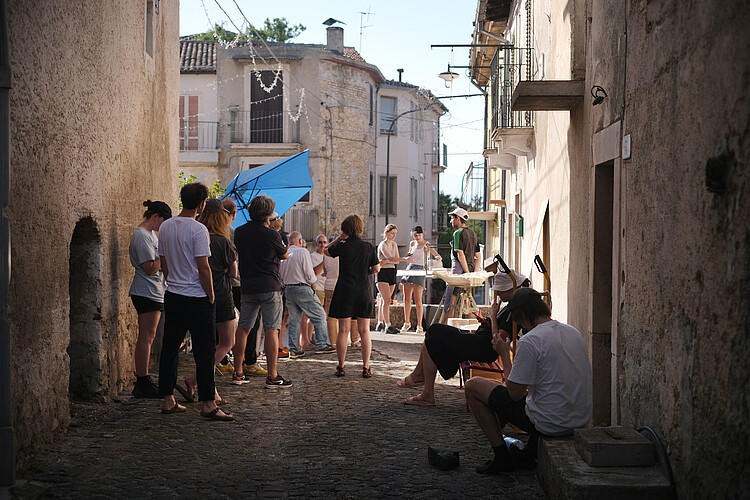

Exhibition, Creative Direction, and Organisation:
Roman Stamborski, Natalia Wyrwa, Frédéric de Pourtalès, Sarah Bovelett
With the summer semester an intensive work period started that focused on two topics: Elaboration of minimally invasive concepts for a medium- and long-term transformation of the site for sustainable development in exemplary projects, as well as strategies for conveying the designs, beyond classical presentation methods such as plans and models, in order to be able to be discussed with the inhabitants.
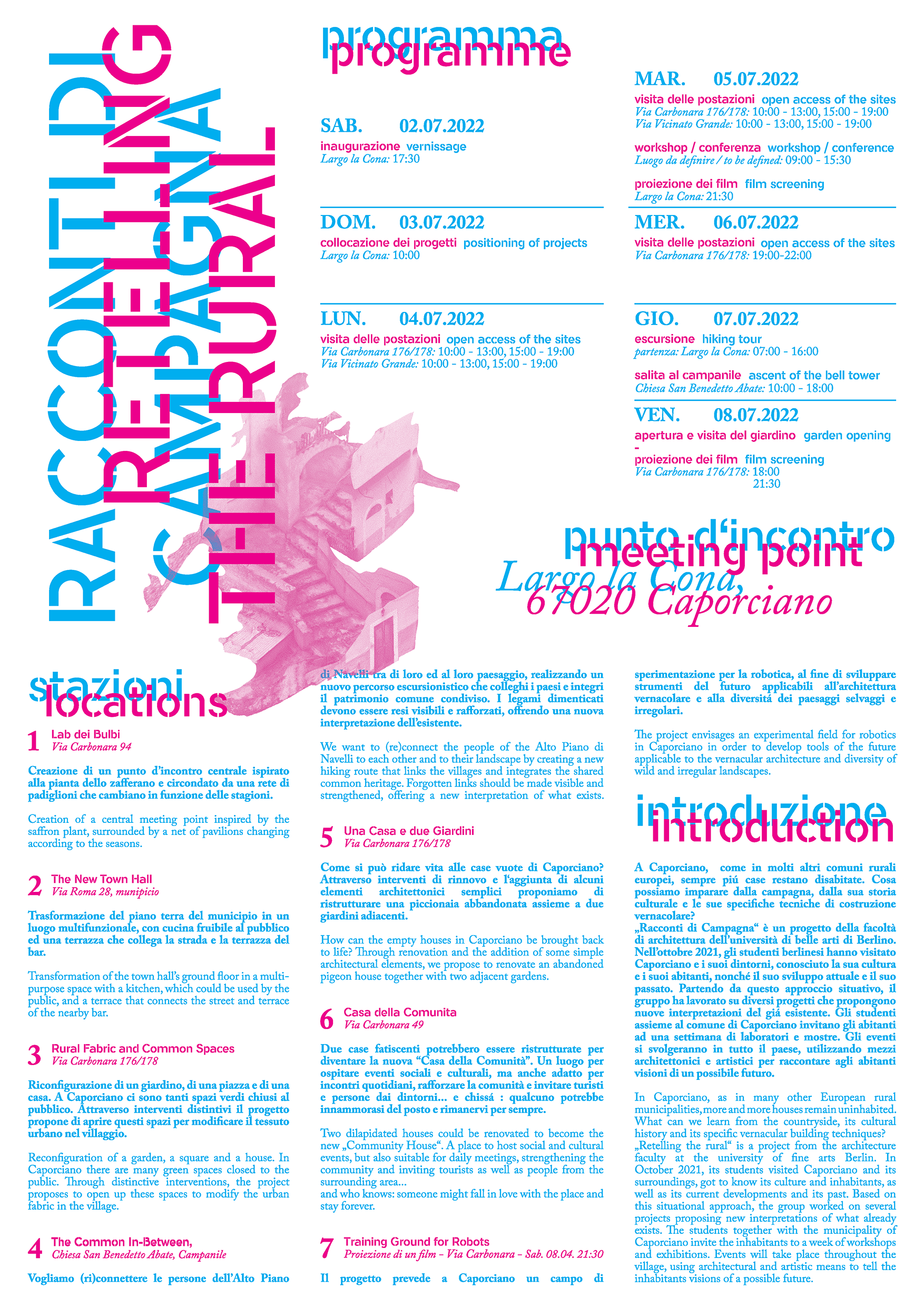


In addition, practical experiments were undertaken to investigate the question of the minimal possible interventions with a high impact, as well as the significance of one-to-one prototypes in architectural design practice. The highlight of this period of the overall project was the second trip to Caporciano for a week of exhibitions and workshops. The village became a reallaboratory, where the design ideas were visualized and made tangible with the use of the simplest methods at their specific locations, in order to create a future vision for the village in collaboration with the locals.

- The Common In-Between
Project by Max Bilger, Leonie Hartung, Cosima Seiberth
The Common In-Between takes a large-scale, landscape-topography perspective and considers Caporciano as a node in the network of places on the plateau, the Altopiano di Navelli. Inspired by the tratturi, the traditional paths of the shepherds, the project group looked at the infrastructures, transport routes and their structural manifestations from ancient times to the present day. Parallel to this analysis of the place, the group developed a material resembling opus caementitium, the cement free ancient roman concrete that recycles construction debris and mineral waste that can be found all over the place. This material is used to create sculptures that embody the 2000 years of history of the region in a twofold way. As waymarkers, they also point out the parallel existence of historical and contemporary infrastructures and make them tangible through new hiking routes.
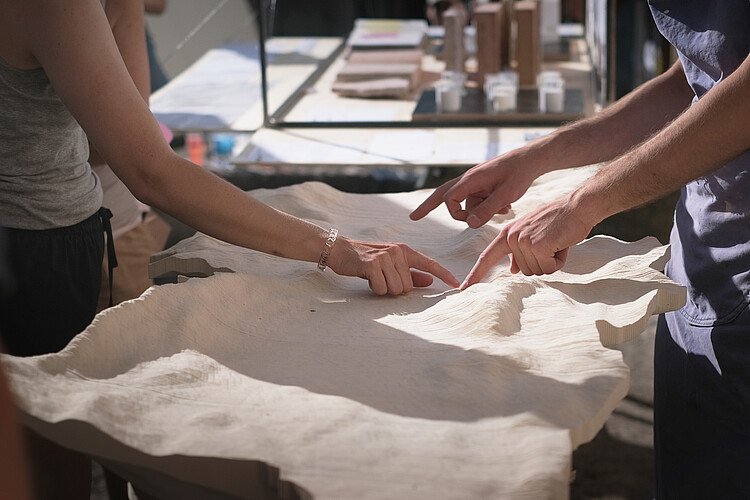
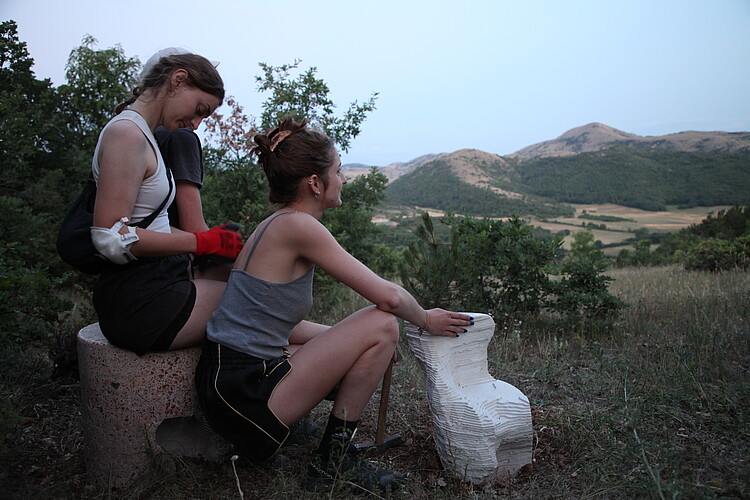
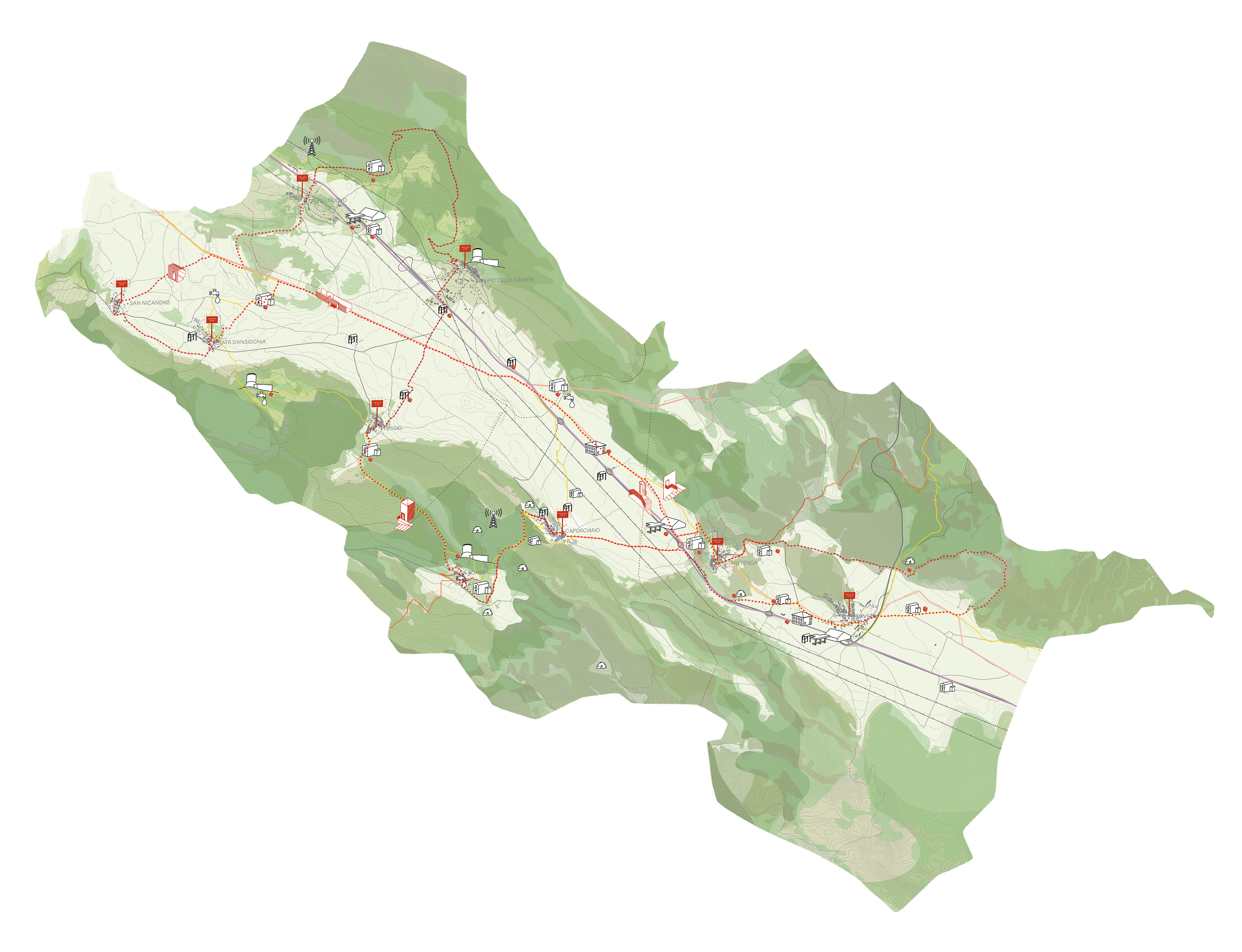
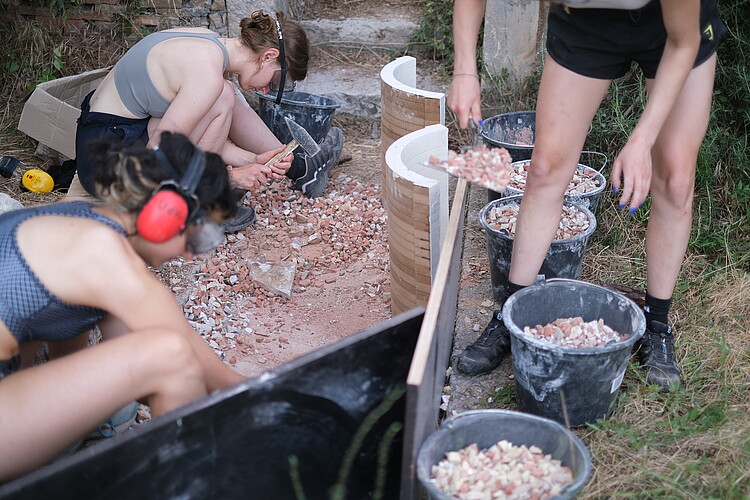
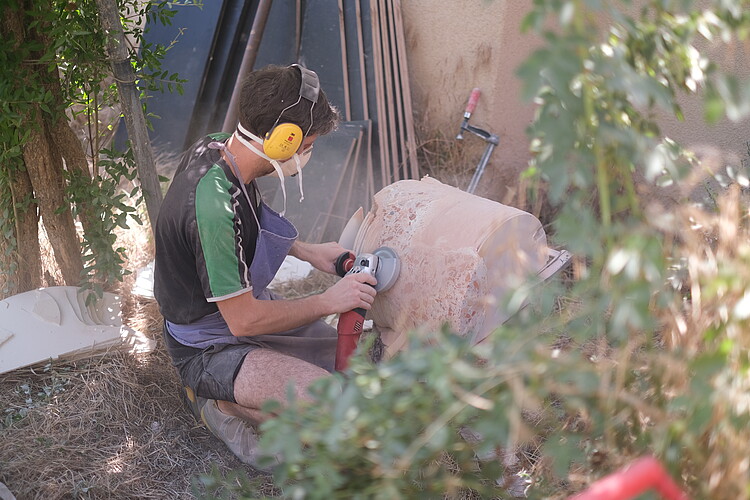
- Communal Gardens
Project by Annekathrin Warter, Lena Wild, Valentin Warminski
The project Communal Gardens aims for a new approach in dealing with the historically grown structural density and the long-term transformation of the entire village. A process that is to be triggered by context-specific interventions: It proposes to open up the numerous abandoned gardens hidden behind walls and the overgrown ruins to change the urban fabric of the place. These green spaces between the narrow and stony alleys offer new opportunities for the local community to meet. This not only makes the village more attractive as a place for people to live and settle, but also creates a sustainable environment that can respond more flexibly to the challenges of climate change. Within a week, an exemplary garden was redesigned by the students and warmly inaugurated together with the residents.
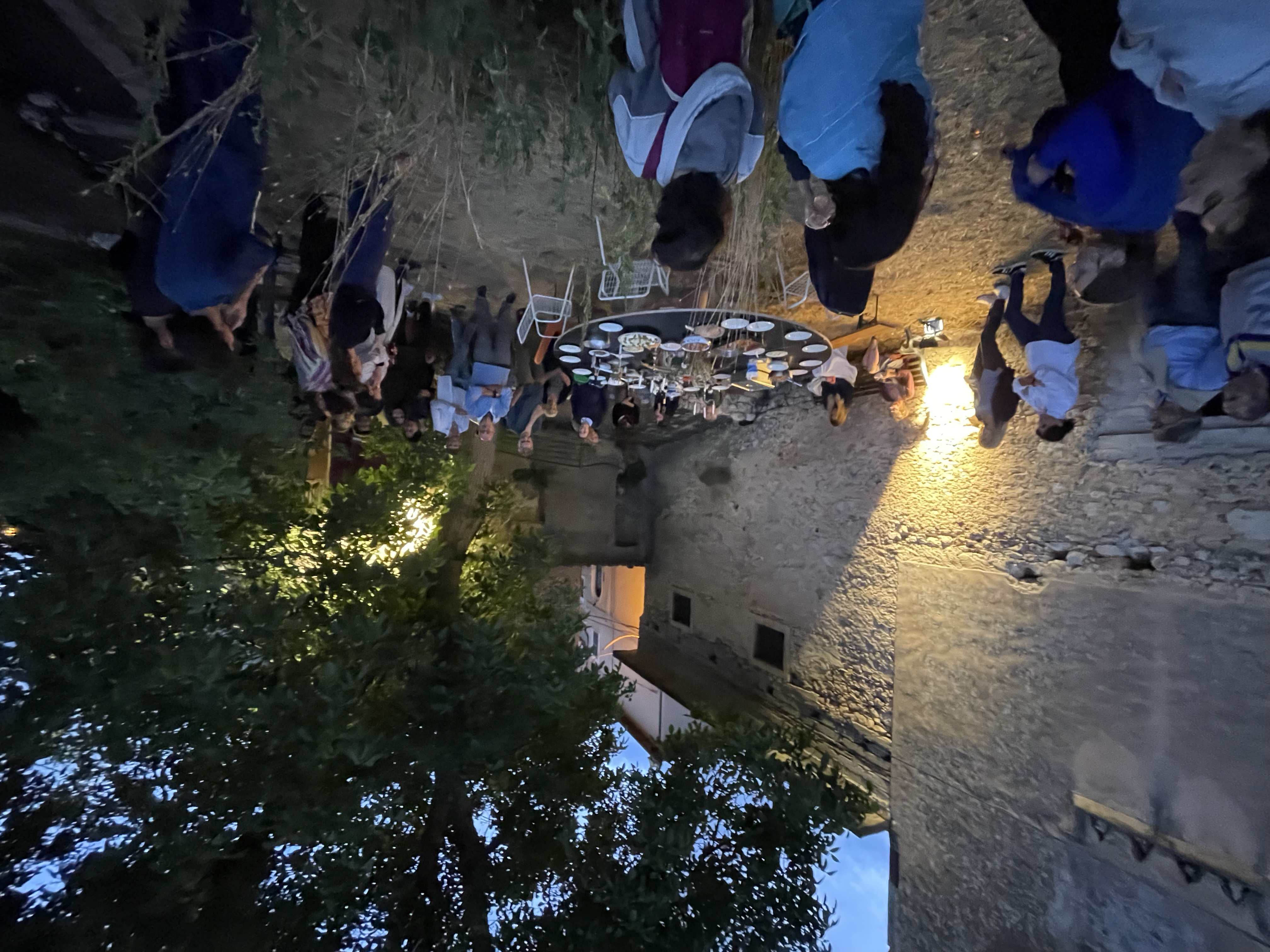
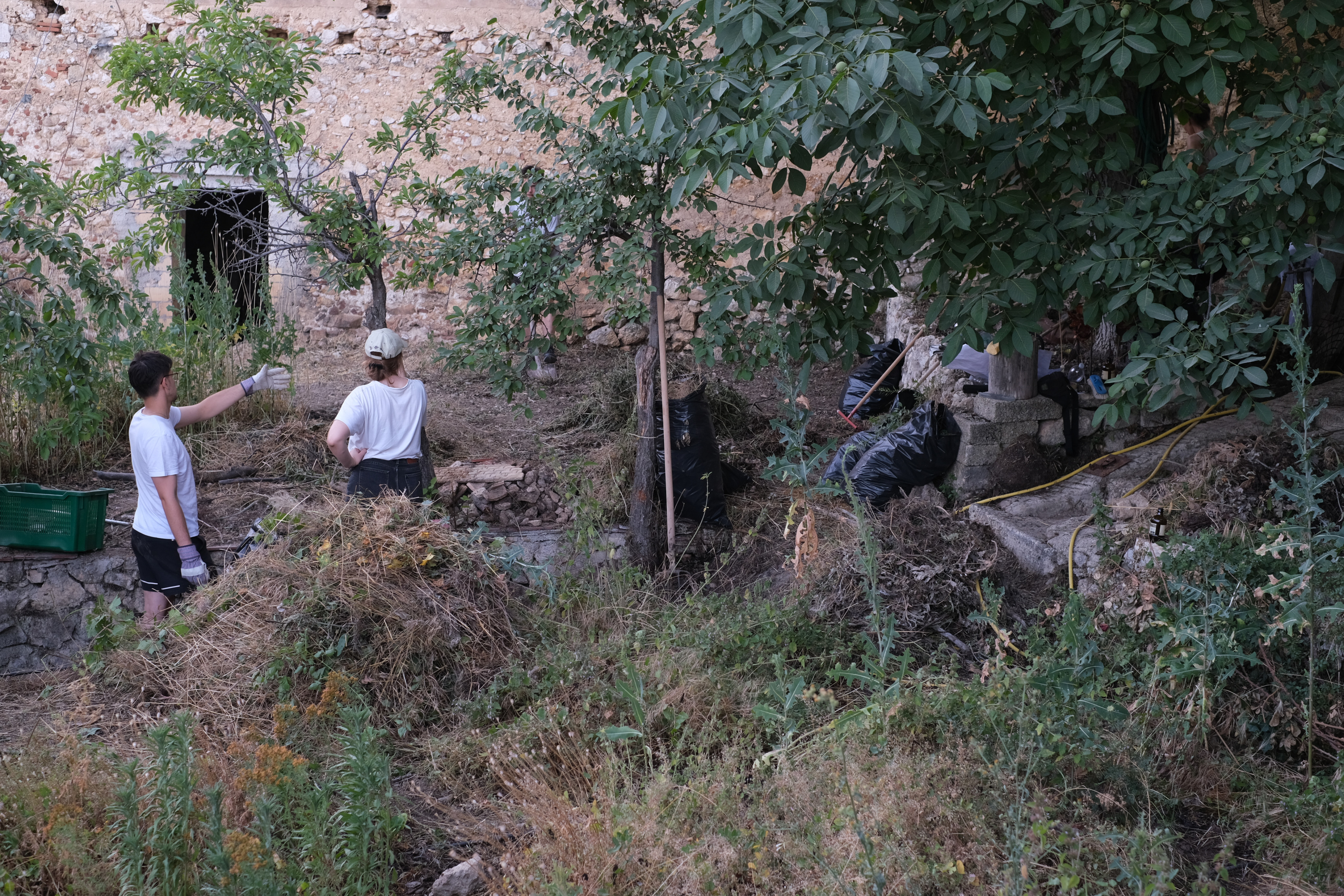

︎︎︎︎